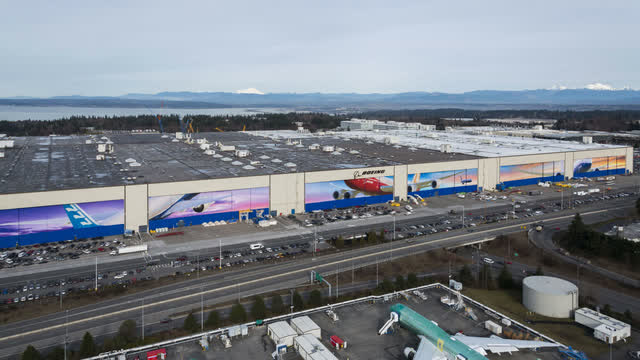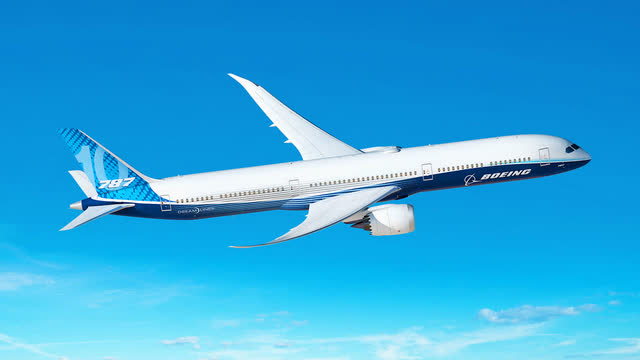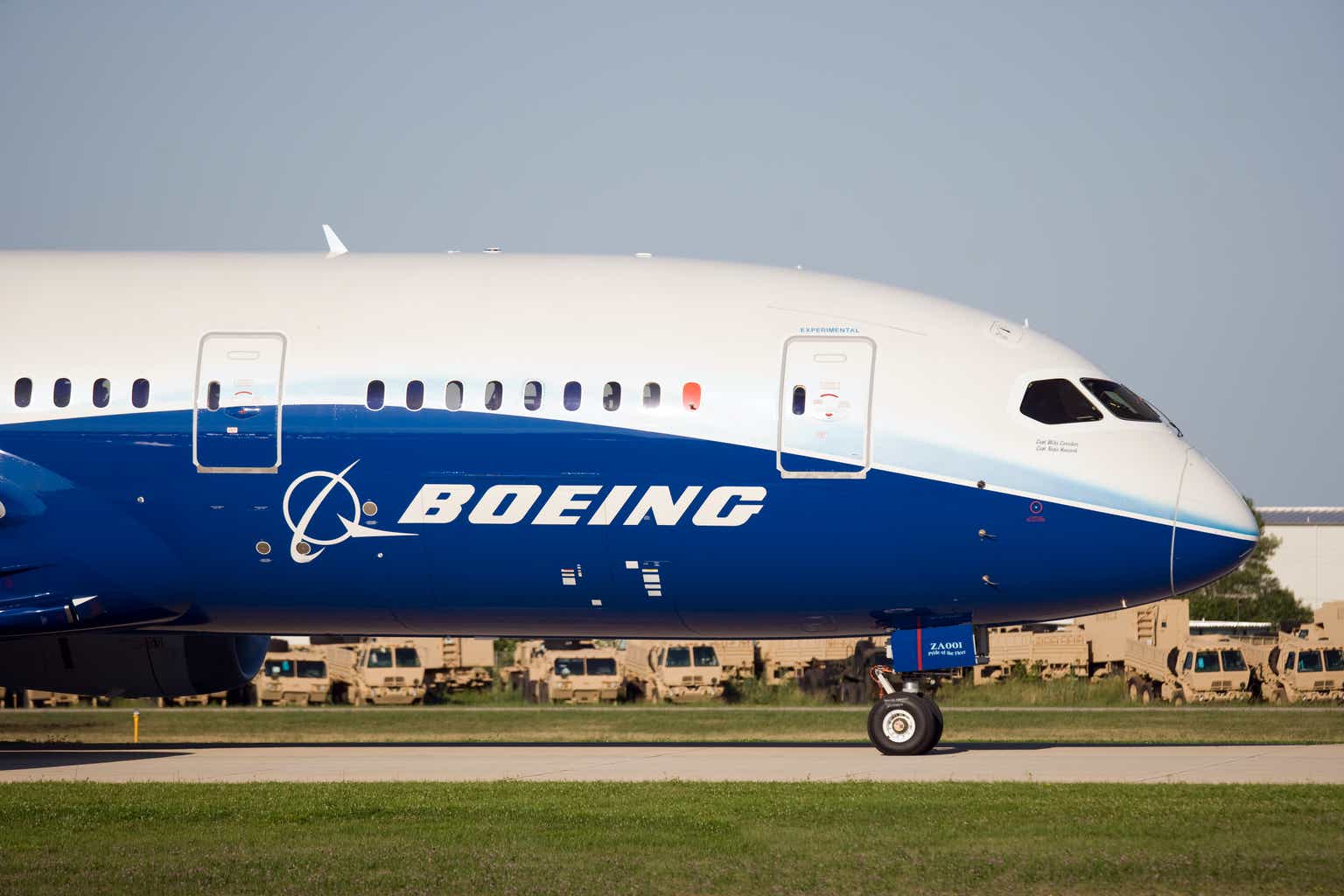The first weeks of Kelly Ortberg as CEO of The Boeing Company (NYSE:BA) have been very eventful ones. Ortberg, who took the lead at Boeing in August, has been faced with a temporary suspension of the Boeing 777X flight test program, problems with the Starliner and has been unable to prevent a strike at Boeing. In this report, I discuss the strike and while I believe the result is a net negative, I will also discuss why Boeing will have some leverage with customers on penalty payments.
IAM Seeks 40% Increase In Pay For Boeing
Boeing
The largest union at Boeing, the International Association of Machinists and Aerospace Workers, or IAM, was looking for a 40% increase in pay as well as job security for decades to come. Especially the component of job security has been essential. The state of Washington was once the home of commercial airplane manufacturing for the Boeing 737, Boeing 767, Boeing 777, Boeing 787 and Boeing 747. The Boeing 747 program has concluded after 55 years of production, while the Boeing 787 production has been replaced on the East Coast.
For commercial applications, that leaves the state of Washington with production for the Boeing 767. It only has a low production rate and only produces the base aircraft for the KC-46A tanker and the freighter and for the Boeing 777 program there is a freighter and the Boeing 777X. However, the Boeing 777 program is running at low production levels while the Boeing 737 MAX is plagued. Following the pandemic, Boeing stopped production of the Boeing 787 in Everett, which means that there is no big airplane program in Everett anymore. The company had intended to open a fourth assembly line for the Boeing 737 MAX in Everett, but following the January door accident, production planning has been under pressure. So, job security has been essential and basically meant that the company would commit to building its next clean-sheet design in Everett.
The union and Boeing eventually agreed on a 25% hike in pay, while the bigger achievement was the commitment that the next Boeing airplane would be built in Everett. So, what the union agreed to was a lower hike in wages with job security being guaranteed. While the union and Boeing announced the tentative agreement, it became clear rather quickly that employees were not satisfied with the agreement. From what I have seen, most employees consider the 25% hike to be low and mostly consists of shifting money from one pot into another to get to that hike. I am no expert in calculating actual wage increases. However, what is clear is that to some extent Boeing inflicted this, like many things, upon itself.
Boeing Has A History Of Trying To Push Unions
Boeing
To control labor costs, Boeing has been outsourcing and set up camp in South Carolina, where employees are not represented by a union. In Washington, this has always felt like a way to pressure union workers into lowering labor costs to keep production work in the state, and that dates back years. In 2008, Boeing workers went on strike for eight weeks. At the time, Boeing’s CEO did not seem to be willing to comply with the wishes of the union. In some way, one can understand that looking for higher pay at the time of the financial crisis in 2008. However, McNerney who was CEO of Boeing at that time, also pointed at emerging threats from China, Russia, and Japan. Coincidentally, these were also the geographical areas to where Boeing had outsourced work to. Basically, this meant that Boeing leadership used emerging threats as an excuse to not reach a new agreement, while they contributed to threats emerging by putting parts of their business in those countries. So, Boeing does not have a great relationship with the unions due to the years-long pressure Boeing leadership exerted on the unions.
Once again faced with a crisis, Boeing’s CEO, this time Kelly Ortberg, was seeking understanding from employees and not endanger the company’s recovery. While I do think Ortberg has a point, it does seem that Boeing’s leadership has a tendency to pass on risk and pressure to its employees. With that in mind, it is not odd that union workers in rejected the offer and, with an overwhelming majority of 96%, voted to strike. Even though Ortberg indicated the company has broken with the past of holding the best offer back, unions have little to lose by going on a strike. It is unlikely that workers will go on strike, and the same agreement that Boeing initially put on the table will end the strike. Probably the biggest disappointment for Ortberg is that he has attempted to reset the relationship with the unions that were put under pressure by previous leaders of Boeing, and he has been unable to do so.
Boeing once again may look like it is trying to focus on the bottom line. However, I have to say a 40% increase for a company as troubled is, in fact, a lot. What we have seen globally with strikes and higher wages in the industry to combat inflation is that it led to a cost spiral. This eventually did not offset the higher cost of living for many employees as the cost spiral trickled through.
The reality, however, remains that if you want to build a complex product such as airplanes, you better make sure you have the best people in and your systems and facilities calibrated properly and pay your people accordingly. What I have heard repeatedly is that union workers deliver superior work compared to non-union workers. Everybody has their opinion about that, but it should be noted that for a while Boeing was plagued by tooling being left behind in parts of the airplane after assembly, and that was also happening in the unionized facilities. So, union workers are also not perfect. It is up to Boeing to put the best systems and procedures in place and hire and pay the best people.
How Many Boeing Employees Are On Strike?
Currently, Boeing has over 170,000 employees worldwide, of which 145,000 employees are in the US. Out of those 145,000 employees, 33,000 are represented by the union, which means that around 23% of the workforce is on strike and that will have an impact on the company’s results in the third quarter and possibly the fourth quarter.
How Much Will The Strike Cost Boeing?
In 2008, the strike cost Boeing $5.1 billion in revenues, or around $7.5 billion in revenues today. That would equate to nearly $135 million dollars per day. So, a strike is definitely impactful on the company’s revenues. Calibrated to today’s production levels, the strike would lead to revenue pressure on Boeing of around $77 million per day, and that is when we include the Boeing 787 that is being reworked in Everett. If we exclude the Boeing 787 because the new airplanes are built outside of Everett, we get to around $61 million per day in revenues lost. The composite gross margins seem to be around 18% to 20%.
|
Strike Duration |
Low revenue impact |
High Revenue impact |
Low profit impact |
High profit impact |
|
1 day |
$61 |
$77 |
$11.0 |
$15.3 |
|
7 days |
$428 |
$537 |
$77.0 |
$107.3 |
|
28 days |
$1,711 |
$2,147 |
$308.0 |
$429.3 |
|
56 days |
$3,422 |
$4,293 |
$616.0 |
$858.7 |
Using those figures, we can compile a table with the impact of lower airplane deliveries on revenues and earnings. Each day, the impact would be around $61 million to $77 million in revenues and $11 million to $15.3 million in lower reported earnings. Per month, this would equate to $1.8 billion to $2.3 billion lower revenues and roughly $330 to $460 million in missed profits. The main issue, however, is not the missed revenues, and not even the missed profits. If we translate things to free cash flow pressure from final delivery payments not coming in, we get to $1.26 billion to $1.58 billion. If we then include the unwind from Dreamliner inventory that was expected, we get to a free cash flow pressure of $1.5 billion to $1.9 billion.
If the strike lasts as long as in 2008, we get to $2.35 billion to $3 billion in free cash flow pressure and if we incorporate higher delivery rates from inventory expected for the Dreamliner, we get to $2.8 billion to $3.5 billion for a 56-day strike (as was the case in 2008). So, Boeing is facing free cash flow pressure running into billions of dollars. It has been suggested that Boeing could use the strike to dodge customer compensation for late deliveries, as strikes can be considered an act of force majeure as it is also incorporated in government and commercial general agreements. Let’s say that Boeing would have to pay penalties to customers of around 10%. For many airplanes, that would be somewhere between $5 million to $10 million. Just to offset the free cash flow loss, Boeing would need to cite this event of force majeure on 350 to 700 deliveries. While technically, it could link future delays to the production ramp-up to the strike, imposing it on 350 to 700 airplanes seems steep. Apart from that, the disruption to the production systems, including the supply chain, will be significant if the strike is prolonged.
So, you would be looking at a significant number of airplane deliveries that could indeed be affected by the strike. The indirect impact could also be classified as the strike, but it is simply creating a mess in the production system. This will lead to Boeing floating away further from recovery, and that could eventually cost more than what the strike will cost in terms of stability to the overall production and supply chain health and stability.
Boeing Still Faces A Pile Of Debt
The reality for Boeing is also that it continues to face a significant debt load of $57.9 billion, and the company’s credit rating is close to junk status. The current cash flow pressure could result in a downgrade to junk status, which could make borrowing money more costly and, in some cases, even impossible. So, the current strike could be something that eventually will push the company towards shareholder dilution on a higher labor cost basis. To be better equipped for the future, the company may attempt to raise capital by issuing stock and reset its debt.
Conclusion: Boeing Strike Could Have Major Implications For Cash Flow And Shareholders
How big the impact of the strike will be on Boeing is going to depend largely on the duration of the strike. If it lasts anywhere near as long as 2008, it will provide a multi-billion dollar cash flow headwind to the company that already has a big pile of debt. As a result, I do believe that a long strike could result in Boeing diluting shareholders to increase liquidity and reset its debt balance.
For the near term, Boeing is a hold at best. If you believe that Boeing will be able to turn things around, then weakness in the stock price and more prominently after shareholder dilution become opportunities to take a position. I remain bullish on Boeing stock for the long term, but the reality is that the strike can have a major impact on the company and its stakeholders, which includes customers as well as shareholders.
Read the full article here




